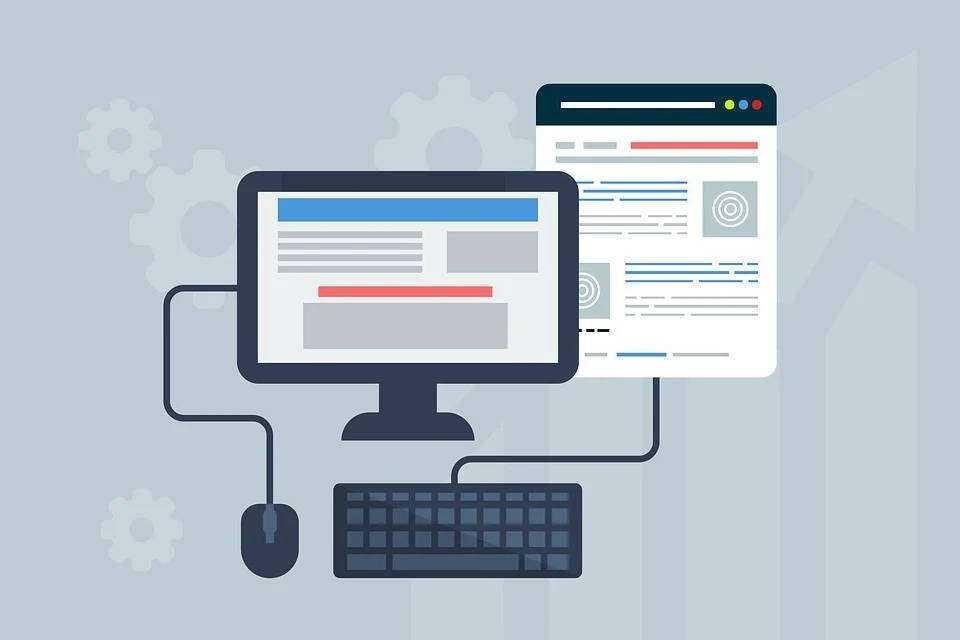As an Amazon FBA seller, your branding strategy can have a surprisingly-high impact on your conversion rate & sales. How you present your business to customers can make a big difference in terms of their willingness to choose your products over competitors.
In this article, we will discuss 11 branding tips that will help improve your Amazon FBA bottom line – especially for private label products. Follow these tips to create a sizable difference in profitability over the long term!
Use this outline to skip to any section of this guide:
- What Is Branding for Amazon FBA?
- Tip #1: Understand Your Target Market
- Tip #2: Create a Unique Selling Proposition
- Tip #3: Design a Premium-Quality Logo
- Tip #4: Develop a Compelling Brand Story
- Tip #5: Use High-Quality Images
- Tip #6: Enhance Your Brand Messaging
- Tip #7: Maintain a Good Reputation Across the Web
- Tip #8: Have a Professional Website
- Tip #9: Use Social Media to Your Advantage
- Tip #10: Write Compelling Product Descriptions
- Tip #11: Focus on Customer Service
- Tip #12: Offer Strong Guarantees
- Tip #13: Choose the Right Colors
- Tip #14: Have Your Products Inspected With FBA Prep
What is Branding for Amazon FBA?
Before we dive into the branding tips, it is important to understand what Amazon FBA branding actually is. Successful branding involves creating an identity, style & persona for your products. It is how you express who you are as a retail company and what your products offer to customers. When done correctly, branding can help build customer loyalty and trust, leading to increased sales and customer referrals.
Now that we have a solid grasp of branding for Amazon FBA, let’s get into the tips!
Have a Clear Understanding of Your Target Market
The first step in any successful branding strategy is to have a clear understanding of your target market. Who are your ideal customers? What are their interests, their desires, and their struggles? Answering these questions will help you better define your brand and create marketing materials that resonate with your target buyers.
Keep in mind – the name, style and appearance of your brand can have a huge impact on how it appeals to your target customers. You need to enter their minds and ask yourself – “How does my brand’s appearance and overall impression come off to someone who may be interested in what I’m selling?”
If you’re selling baby toys, you would certainly never pick a brand name like “Phantom Predator” or even something more toned-down like “Teflon Toys” – these names simply don’t resonate with your target buyers. However, a brand name like “Gentle Novelties” will have a much better chance at attracting their attention and leading to a purchase.
When it comes to your private label products, always dedicate high effort into picking your brand name and identity – because with thousands of shoppers coming to your product pages over time… it can really move the needle in terms of profit and sales in the long-term.
Create a Unique Selling Proposition
What makes your Amazon brand different from other companies? This is an important question to answer when developing your branding strategy. You should aim to communicate what sets you apart from other products on Amazon. This could range from unique product offerings… to unique features and benefits of your products… or even superior customer service on its own.
Once you know what makes your brand and products special, make sure this message is communicated across all of your branding efforts. We’ll touch on that more below with product descriptions and brand story.

Design a Premium-Quality Logo
Your logo is one of the first things potential customers will see when they encounter your brand’s private label products. It should be professional and convey the message of your company – and if you don’t have a logo yet, now is the time to invest in one! Hire a professional designer to create a logo that accurately represents your brand.
You generally want a simple, easy-to-remember logo design that portrays authority & matches the persona of your target customers. If you sell motorsports products… a logo of a flame or dynamite will fit your customer’s style perfectly. And if you sell office products… a modern, professional and contemporary logo will do the same.
Develop a Compelling Brand Story
Your brand story runs downstream from your identity. It should explain who you are, what your products do, and why you create them. Your brand story should be unique, memorable, and easy to understand – especially when you’re competing right next to hundreds or thousands of different sellers and brands.
The most successful brands get right to the core of their target customer’s inherent desires. You want your brand to portray and tell the story of them overcoming their problem (which your product solves) and using your product to reach that destination. This isn’t only done with words directly (you only have so much room for a name, logo and possible tagline) – but you should certainly put intense effort into the small amount of space you have to communicate this.
If you’re developing a brand identity for a meditation product… you might want to make a short and sweet tagline like “Meditate on Cloud Nine”. Notice how you immediately visualize the act of enjoying peace, serenity and comfort – just from reading the tagline. You still need to gain your customer’s trust, craft solid product descriptions and have 5 star reviews… but a compelling tagline can give your brand and products a great first impression.

Use High-Quality Images
The images you use on your website, social media, and marketing materials should be high quality and consistent with your branding. Poor quality images will give customers the impression that your business is not professional or trustworthy. Invest in some good quality photography or hire a professional photographer to take shots of your products and team members.
Your product images should include plain white background shots (best for zooming in and seeing details up close), lifestyle shots (to portray your customers using the product themselves) and ideally you want to include feature/benefit shots. Oftentimes, you’ll have a graphic designer take your white background shots, replace it with a vibrant & eye-catching background, and add benefit-driven copy next to the product. Many times, customers will only look at the images before scrolling down and exploring the product details further – so you want to make sure you’re catching their attention right away, otherwise they’re bouncing to a competitor listing.
Depending on your product, you may also want to take your white background shots and have a graphic designer create measurements, directional graphics (to show how a product opens up, extends out, twists around, etc), or even size comparison shots next to common items they can relate too – otherwise you’re asking the customer to create these visuals in their head, which can be difficult.
Enhance Your Brand Messaging
All of your branding efforts should be consistent with one another. Your product selections, product images, and product listings should all have the same look and feel. This will help create a cohesive brand that customers can easily recognize and remember – especially if they decide to come back later and purchase. If your brand name and logo is memorable and powerful… there’s a decent chance customers will find it quickly when they come back and search for it.
If you use any keyword search volume tools, look up medium-sized brand names. You’d be surprised – you don’t need to be as big as Nike to have customers searching for your brand. Even small brands will have occasional searches for their names too!
Maintain a Good Reputation Across the Web
Did you know that many customers will search your brand on Google first – even if you’re an Amazon FBA seller? You typically see this if you’re selling on your own website… but yes, Amazon customers will often search across the internet for Amazon products too.
There’s a growing number of shoppers who suspect fake reviews & inauthentic claims when it comes to online retail – and all it takes is a very quick Google search to get a further look at a product or brand.
Is your brand featured or mentioned on a trustworthy website? Does it have authentic reviews on personal blog sites, forums, or even on YouTube/Vimeo? Or does your product have negative reviews posted on Reddit showing up on Google’s first page for your brand’s keyword? For many buyers, these factors can be extremely important before they purchase – so it’s incredibly crucial to monitor your search engine presence and be aware of how you appear in Google.

Have a Professionally-Branded Website
Having a website certainly isn’t required for Amazon FBA – so if you don’t have one yet, feel free to skip this one… but if your website is up and running? Your potential customers might find your website after searching your brand in Google, and you ideally want your website design to look half-decent (or better). Just like we mentioned with your logo and product images above, if your brand is attached to anything that appears low-grade, lazy or unattractive… that can be a potential red flag for customers. Organize the layout, add high-quality photos, and you should be good to go.
Use Social Media to Your Advantage
Did you know that your social media links often appear in Google as well? It’s similar to a website – you don’t NEED social media to successfully sell on Amazon… but if your social channels are launched and appearing in the search engine for your brand’s keyword, you likely want each social media page to appear professional.
Social media is a powerful tool that can be used to improve your branding efforts. Post consistent content that is in line with your brand messaging – with high-quality images and videos. On top of that, make sure your profile information is accurate and up-to-date. A few high-quality posts near the top of your page should be all you need to leave a good impression.

Write Compelling Product Descriptions
The product descriptions and Amazon listing should be razor-sharp and compelling. They should accurately describe the features and benefits of your private label products – while remaining consistent with the rest of your branding efforts. Use language that follows and matches your brand voice and tone.
Remember – you’re creating an “internal dialogue” with the customer. Pay attention to how you feel and perceive a brand next time you’re shopping around too… or simply do it right now as you read this article. Notice how you feel like you’re listening to someone speak in the middle of a conversation.
Now sure, it’s only words on a page… however, you’re still making an emotional connection to the message. This is especially true for customers on your Amazon product listing – because they’re seeking a much-needed solution to their emotional problem (which your product will help alleviate).
Focus on Customer Service
The good news with Amazon is they will often handle the customer service for you (unless your products are seller-fulfilled). But even then – your customers will often have product quality and functionality questions, which are crucial for landing the sale in the first place.
Delivering excellent customer service is one of the best ways to improve your brand. Make sure your team is friendly, helpful and capable of empathizing with your customer struggles or concerns. Always respond to customer inquiries within 24 hours, and always go above and beyond to exceed their expectations.
At the end of the day… you shouldn’t need a financial incentive to maintain customer service. You’ve been on the receiving end of poor customer service yourself – and it feels the same for your own customers too!
As an Amazon FBA business, you should do your best to outsource or hire a customer service rep to handle inquiries (if they’re beginning to stack up heavily). You have far too much to focus on with growing & scaling the operation – customer service likely isn’t the best use of your time. You should never neglect it… but always do your best to outsource or hire quickly.
Offer Strong Guarantees
Amazon already offers 30 day returns… but for many products, you may want to consider adding more guarantees (especially if your competitors are doing the same). For example – if you’re selling a tech product, does it make sense to offer an extended warranty? Think about what assurances you can offer to customers, and show them you’re there to lower the risk by purchasing your product. This will enhance your brand image and perception in the customer’s eyes – since you’re separating yourself from other competitors. Many shoppers are extremely skeptical of false claims by companies that simply want to take their money without delivering on their promise – and guarantees/warranties can help show you’re not one of them.

Choose the Right Colors
The colors in your branding efforts should be consistent with your brand identity. They should convey the right message and appeal to your target audience – in terms of their style, personality, and environment they find themselves in (especially with your product in use).
For example – if you’re selling home decor… you typically want to avoid out-of-place colors like pink or yellow. Many product niches can match several color styles and themes, but you always want to zoom-out and think about what fits best for the customer. The color theme of your Amazon brand can have a surprisingly-large impact on your revenue.
Have Your Products Inspected With FBA Prep
One of the WORST ways to hurt your brand image (and reviews) is to ship your customers damaged or defective products. Unfortunately customers don’t fully understand the manufacturing & supply chain process… which means it’s hard for them to know your manufacturer may have simply dropped the ball (they’ll almost always blame you directly).
However, it’s still your responsibility to have your products delivered without any defects. Most FBA sellers prefer to use a prep center like ZonPrep – which helps lower supply chain costs by inspecting your products and prepping your inventory for Amazon’s highly-strict packaging requirements.
As we all know, most manufacturers simply can’t prep your inventory with any sort of consistency… and many times, they only inspect a small percentage of your inventory prior to shipping it out. In the worst cases, they’ll even ignore product quality issues and still ship it out – since it hurts their bottom line to manufacture another batch of inventory. Partnering with a reliable FBA prep center can help mitigate these risks and ultimately improve your profit margins in the long run.
Wrapping It Up
These are just a few tips to help you improve your branding strategy – which helps significantly set your products apart from the endless list of competitors on Amazon. Remember, each shopper is just 1 single click away from checking out the next product on Amazon, so the standards are incredibly high to communicate your product’s value. Branding is one of the most effective ways to do that – and it often doesn’t cost much to enhance your brand identity.
By focusing on each of these methods, you can create a strong brand that will resonate with customers and help you grow your Amazon business. FBA sellers like yourself can use these tips to improve their conversion rate, profitability, revenue and ultimately grow & scale your FBA business. Keep these in mind as you work on developing your brand.
